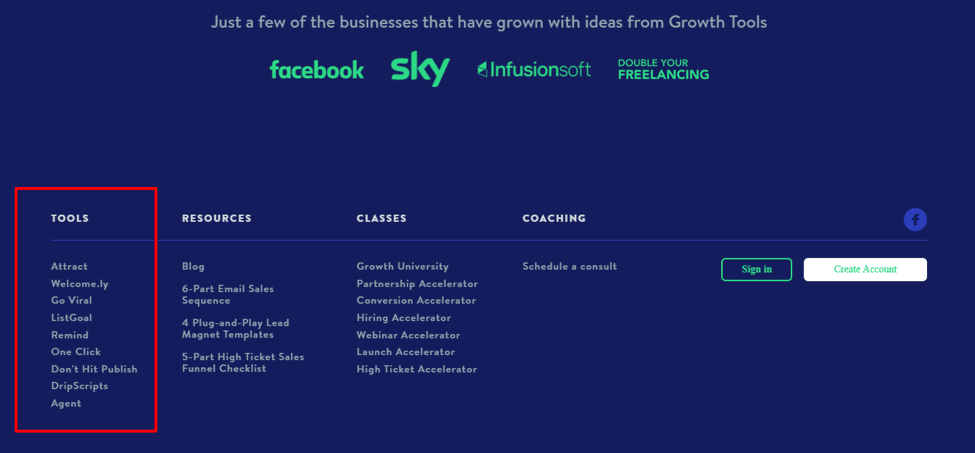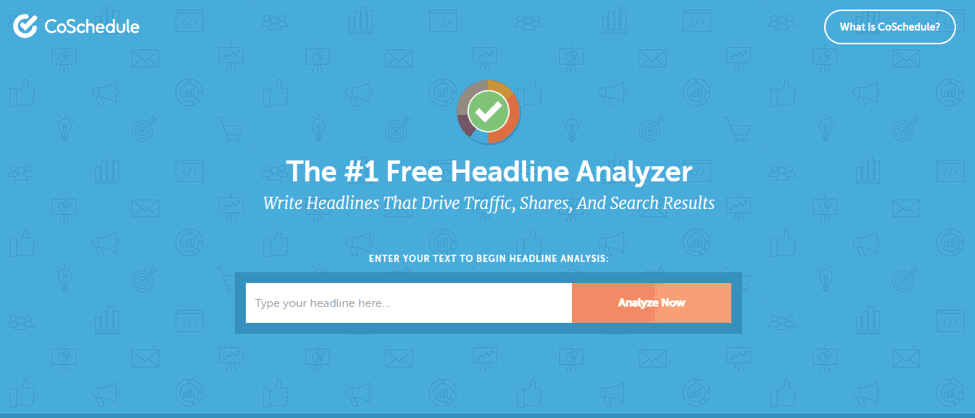Email marketing consistently comes out on top as the digital marketing channel that produces the highest ROI.
Still, not just any email list, one that is engaged and cares about what you have to say.
There are over 300 billion emails sent every single day, so an uninterested list won’t get the results you’re looking for. This guide looks at effective ways to build an engaged email list that can propel your brand forward.
Create an inexpensive tool
People are used to PDFs and Ebooks and, though they can be effective, they’ve lost their former list building power. A different approach is to make an inexpensive or free tool to give away.
This tool solves a very specific problem for your audience and gives instant value. The only “payment” is their email address. You don’t even need to code a web application and make it pretty if a simple calculator made in Excel does the job, people will be happy.
Growth Tools is a brand that has built a business directly on the back of this strategy. It has created multiple tools that solve a specific problem for its audience.

Once someone signs up to use the tool, they’re entered into a drip email sequence that sells its services on the backend. Don’t worry too much about the frequency here; there are plenty of ways to over-mail and have subscribers love you for it.
CoSchedule used a similar strategy and created a headline analyzer that helps its audience create compelling email subject lines and blog post titles.

These examples may have taken more resources to create, but you don’t have to go all out to get the same results.
Instead, focus on the value you deliver as opposed to whether it works in a browser or not.
Use interactive quizzes
Interactive quizzes are effective because they go beyond just getting someone to sign up for your mailing list. It creates micro-commitments, promises to reveal a deeper insight about the quiz taker, and gives you an opportunity to segment your new contacts. WordPress Quiz Plugin helps you effortlessly create engaging quizzes that drive micro-commitments, provide valuable insights, and effectively segment your audience for personalized content delivery.
In addition to that, you can share personalized outcomes with quiz takers and even present timely offers.

There are a few things to keep in mind when creating a quiz for list building:
- The topic is made or break. Focus on a topic that’s targeted at a single segment of your audience as opposed to appealing to your entire audience
- Added usefulness of the quiz comes from segmentation, so make at least four outcomes so you can segment contacts at the point of lead capture and send them tailored follow-up emails. With the WordPress Quiz Plugin, you can easily create quizzes that engage and convert, using customizable options to segment and refine your lead capture process for more effective results.
- Limit the quiz to around seven questions so it’ll be long enough for quiz takers to feel like it’ll be relevant but short enough to hold their attention
- Use Barnum statements to hone in on outcomes that are relevant to the quiz takers but still vague enough to appeal to a large audience
Promo email swapping
It’s common to guest post, but it’s uncommon to guest email. This is a mistake because if you have something valuable, you can reach out to another business to see if they’d be open to exchanging a promotion.
You’ll want to target businesses that have a similar-sized audience, but once you get the ball rolling, you can move up to those with bigger email lists.
If you’re starting from scratch, you can use free email service and pay a stipend for access to a potential partner’s email list.
If you can, avoid the payment route and instead focus on the value you’re offering. Needless to say, the offer needs to be good. You can go the route of packaging an inexpensive tool you’ve created or customized it for their audience.
Things that work well with promo email swapping include:
- Free email courses
- Cheatsheets or one-page summaries of specific concepts
- Free tools
- Audio content
- Previews of premium content (like the first few lessons of your premium course)
Make sure to create a follow-up email sequence, so as to welcome your new subscribers and turn them into valuable leads.
Different offers for different audience segments
Even though your website may be focused around a specific niche. There are people who visit it for different things.
For example, if you have a fitness website, some people will be at the early stages of their journey, while others have achieved what they set out to do and want to maintain those results. Those groups want different things, and you want to meet subscriber expectations. The same lead magnet won’t cater to all of them.
That’s why it’s important to first understand who people are and where they’re coming from. You can send out a survey asking people what their biggest challenges are or look at your analytics account to see what your most popular pages are. Focus on creating offers relevant to the data you gather.

For example, if you’re growing your Instagram presence, place a CTA in your bio that sends those people to a specific offer.
If you’ve spent a lot of time ranking a specific article on your website and its showing results, create a relevant lead magnet for it. It should be something that is directly tied to the content people are reading. If you’ve been going around as a guest on podcasts or you’re hosting a podcast yourself, add a CTA with an easy to remember URL.
Start with a few different offers and gradually make more when you see the positive effect it’s having on your mailing list.
Utilize trending topics on social media
Social media is one of the few places that can go viral in an instant. If you can jump on a trend as soon as it’s starting, you can leave a thoughtful, relevant comment that can be seen by thousands or millions of people. The key is to leave a CTA that sends traffic back to your website or landing page and captures email addresses.
Set up alerts in a tool like SEMrush, Mention, or Google alerts that monitor keywords or articles that are getting shared across the web.
When you see that, it’s starting to get popular, jump in the comments section, and contribute to the conversation.
If you’re in the B2B space, LinkedIn is a great place to start this process. If you’re in the B2C space, Facebook is a great option. Large industry websites could also be a great choice to get the ball rolling because they’ll get SEO traffic for months or weeks after the initial hype has died down.
Conclusion
This article has gone through 5 effective ways of growing your mailing list this year and well into the future. Don’t try to implement all of the strategies at once.
Instead, focus on the ones that are best suited to your situation and start there after you’ve been able to use it effectively, gradually add in more until you’re growing your mailing list like clockwork.
Let me know how you’re building your list in the comments, and don’t forget to share.
